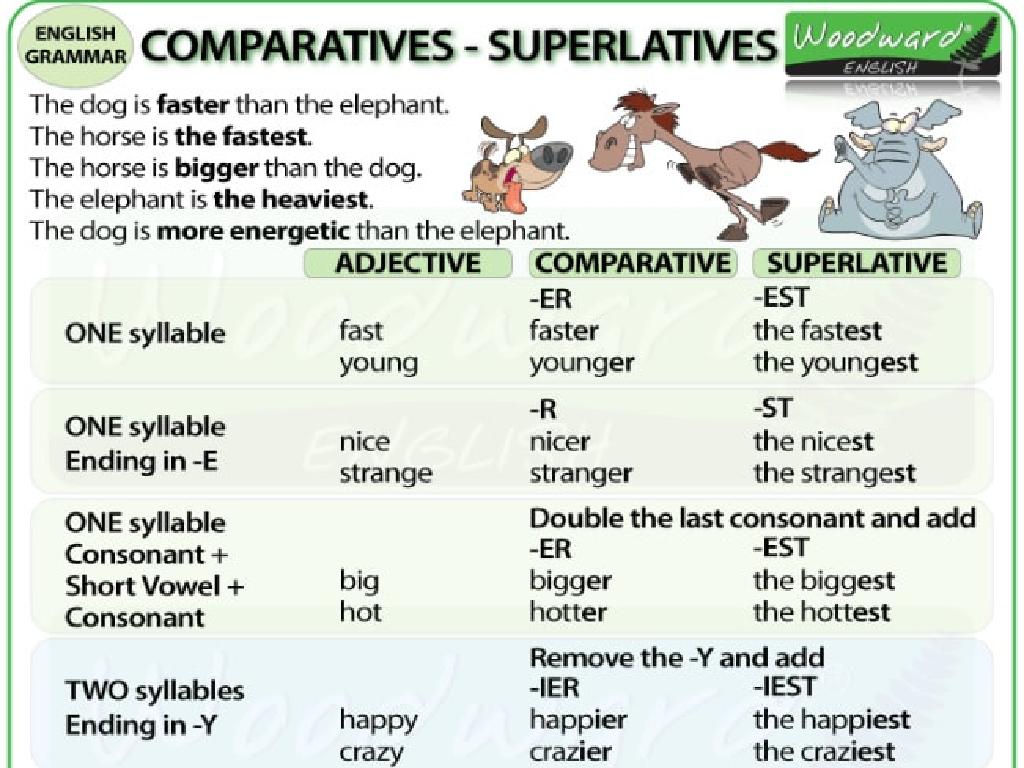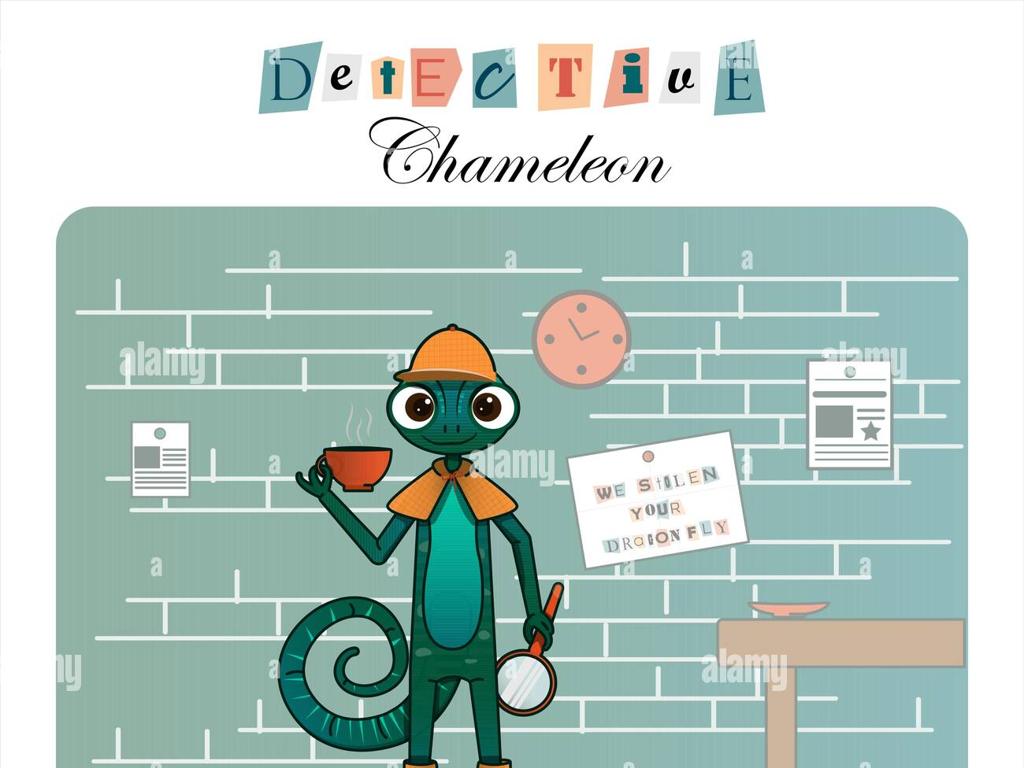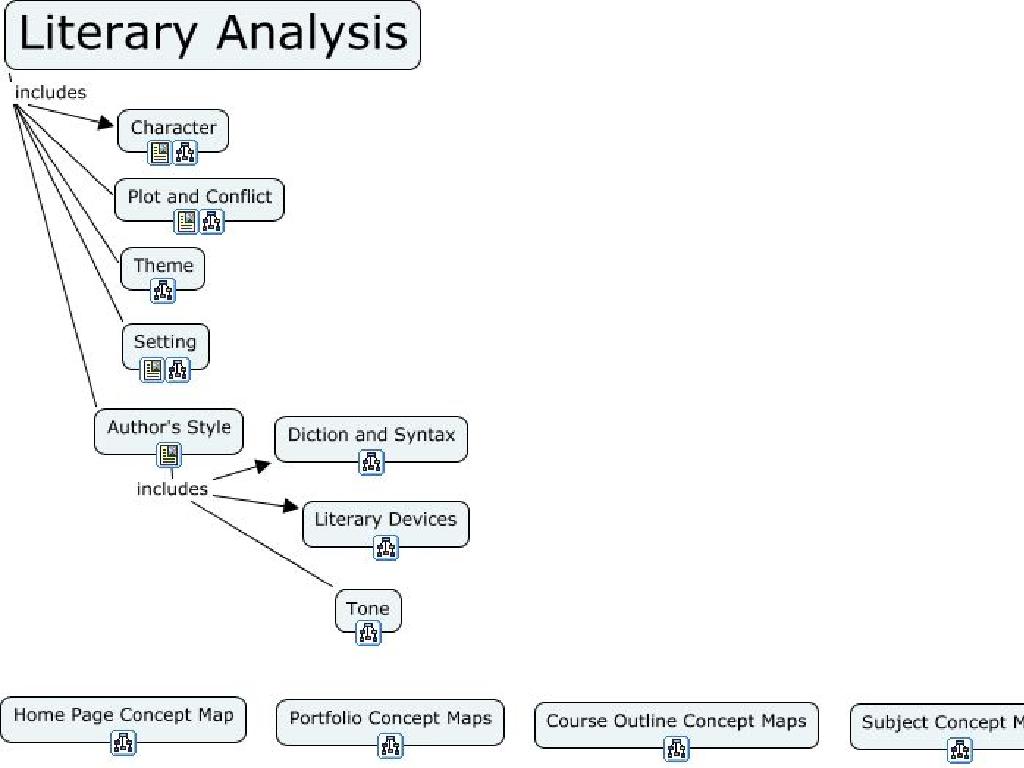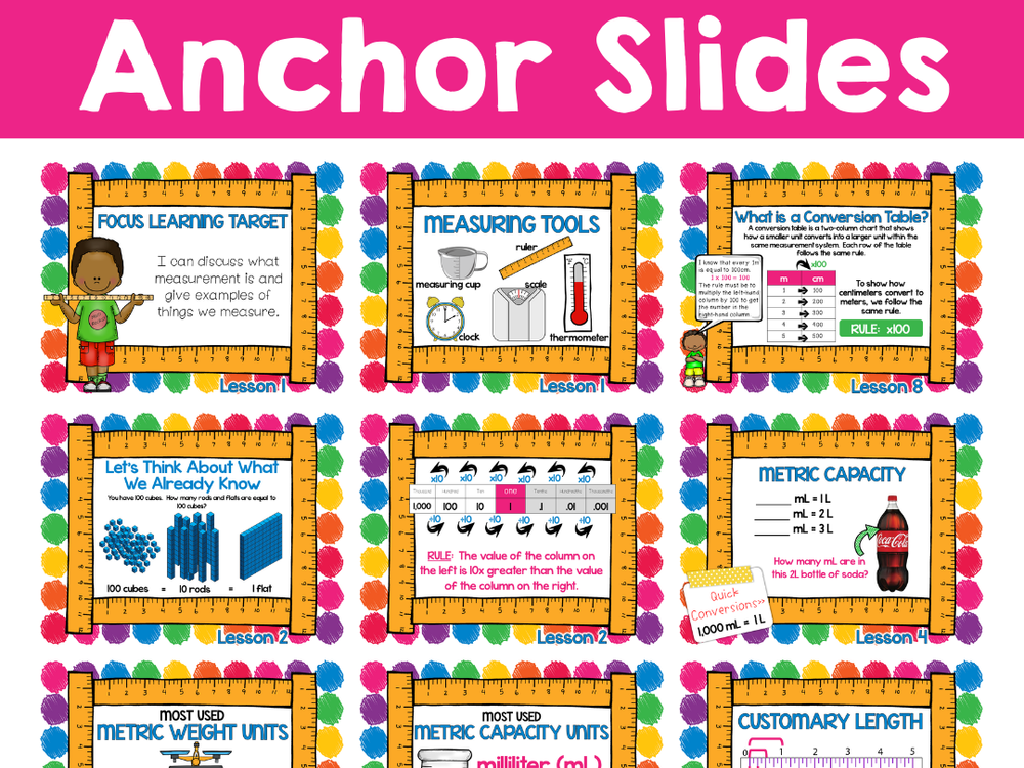Add 3 Or More Fractions With Unlike Denominators
Subject: Math
Grade: Fifth grade
Topic: Add And Subtract Fractions
Please LOG IN to download the presentation. Access is available to registered users only.
View More Content
Adding Fractions with Unlike Denominators
– Welcome to our Math Adventure
– Today’s goal: Add fractions with different denominators
– We’ll explore how to find a common denominator and add
– Why learn fractions? They’re everywhere!
– Fractions are in recipes, time, and even in sharing pizza!
– Mastering fractions: A key math skill
– Strong fraction skills make advanced math much easier
|
Begin the lesson by creating a welcoming and engaging environment. Explain that the day’s objective is to learn how to add fractions that have different denominators. Emphasize the importance of understanding fractions, as they are not only a fundamental part of math but also a concept frequently encountered in daily life, such as in cooking or dividing things equally among people. Highlight that becoming proficient in adding and subtracting fractions is crucial for success in higher-level math topics. Provide examples and ensure that students understand the concept of a denominator before proceeding to the addition of fractions with unlike denominators.
Review of Fractions: Adding Them Up!
– What exactly is a fraction?
– A fraction represents a part of a whole.
– Key parts: numerator & denominator
– The top number (numerator) and the bottom number (denominator) tell us the size of the fraction.
– Fractions in our daily lives
– Pizza slices, measuring cups, and money (quarters).
– Adding fractions with different bottoms
– To add, find a common denominator, then add the numerators.
|
Begin with a quick review of what a fraction is, ensuring students recall that it represents a part of a whole. Clarify the roles of the numerator and denominator. Use relatable examples like slices of pizza, measurements in cooking, and coins to illustrate fractions in everyday life. Then, transition to the concept of adding fractions with unlike denominators by finding a common denominator. This will set the stage for more in-depth practice with adding fractions, reinforcing the concept through familiar, tangible examples.
Adding Fractions with Unlike Denominators
– What are unlike denominators?
– Denominators are different, e.g., 2 in 1/2 and 3 in 1/3.
– Why not add directly?
– Adding fractions requires common denominators for accurate results.
– Example: 1/2 vs 1/3
– Compare 1/2 and 1/3: they represent different parts of a whole.
– Making denominators alike
– Find a common denominator to combine fractions, like 1/2 and 1/3.
|
This slide introduces the concept of unlike denominators and explains why we cannot add fractions with different denominators directly. It’s crucial for students to understand that fractions represent parts of a whole and that these parts must be of the same size (common denominators) to be added together. Use the example of 1/2 and 1/3 to show visually how these fractions represent different portions and cannot be combined without a shared denominator. Teach students how to find the least common denominator (LCD) and convert fractions to have the same denominator before adding. This foundational understanding will help them with more complex fraction addition in the future.
Making Denominators Alike
– Finding a common denominator
– A common denominator is needed to add fractions with different bottoms.
– Using Least Common Multiple (LCM)
– LCM of denominators helps find the smallest common denominator.
– Converting fractions to same denominator
– Multiply top and bottom of fractions by the same number to convert.
– Adding fractions with common denominators
– With like denominators, simply add the numerators together.
|
When adding fractions with unlike denominators, the first step is to find a common denominator so that the fractions are comparable. Teach students how to find the Least Common Multiple (LCM) of the denominators, which will be the common denominator. Once the LCM is found, guide them to convert each fraction to an equivalent fraction with this common denominator by multiplying both the numerator and denominator by the necessary number. After converting, students can easily add the fractions by adding their numerators. Provide examples with different sets of fractions to practice this method and ensure understanding.
Adding Fractions with Unlike Denominators
– Steps to combine fractions
– Example: 1/4 + 1/3 + 1/5
– Add fractions with different bottoms
– Convert to have same denominator
– Find a common denominator for all fractions
– Add the converted fractions
– After conversion, add the numerators
|
This slide introduces the concept of adding fractions with unlike denominators. Start by explaining the steps to find a common denominator, which is necessary for combining fractions that have different denominators. Use the example 1/4 + 1/3 + 1/5 to illustrate the process. Show how to convert each fraction to an equivalent fraction with a common denominator, then add the numerators while keeping the denominator the same. Encourage practice by providing additional sets of fractions to convert and add. This will help solidify the students’ understanding and ability to add fractions with unlike denominators.
Simplifying Fractions After Addition
– Importance of simplifying fractions
– It makes fractions easier to understand and compare.
– Steps to simplify fractions
– Find the greatest common divisor (GCD) and divide the numerator and denominator by it.
– Simplify: 1/4 + 1/3 + 1/5
– Add fractions, find common denominator, add and then simplify.
|
Simplifying fractions is a crucial skill in mathematics as it helps in understanding and comparing the size of different fractions easily. It is also important for solving problems accurately. To simplify a fraction, students should find the greatest common divisor (GCD) of the numerator and the denominator and then divide both by the GCD. For example, after adding 1/4, 1/3, and 1/5, we find a common denominator, combine the fractions, and then simplify the result. This process will be practiced with the given example, and students will be encouraged to try more examples as homework to reinforce the concept.
Class Activity: Fraction Addition Race
– Pair up for a math challenge
– Solve 5 sets of fraction problems
– Add fractions with different denominators
– First to finish & simplify wins
– Remember to find the least common denominator (LCD)
– Ready, set, add those fractions!
– Check each other’s work for accuracy
|
This activity is designed to encourage collaboration and apply the concept of adding fractions with unlike denominators. Before starting, review the steps for finding the least common denominator and simplifying fractions. Make sure each pair has a set of fraction addition problems prepared. Monitor the class to ensure fair play and accurate calculations. Have a prize ready for the winning team to create excitement. Possible variations of the activity could include a relay race where each student solves one part of the problem, or a ‘fraction scavenger hunt’ where students find and solve problems hidden around the classroom.
Conclusion & Homework: Mastering Fractions
– Excellent work on adding fractions!
– Practice with homework assignments
– Complete the problems in your workbook
– Review steps to add fractions
– Remember to find a common denominator
– Any questions or clarifications?
|
As we wrap up today’s lesson on adding fractions with unlike denominators, it’s important to acknowledge the students’ efforts and encourage them to continue practicing at home. The homework will consist of similar problems to those we worked on in class, reinforcing the concept of finding a common denominator before adding. Remind students of the steps: find the least common denominator (LCD), convert each fraction to an equivalent fraction with the LCD, and then add the numerators. Before concluding, open the floor for any questions to ensure understanding. Provide additional examples if necessary and remind them that practice is key to mastery.






